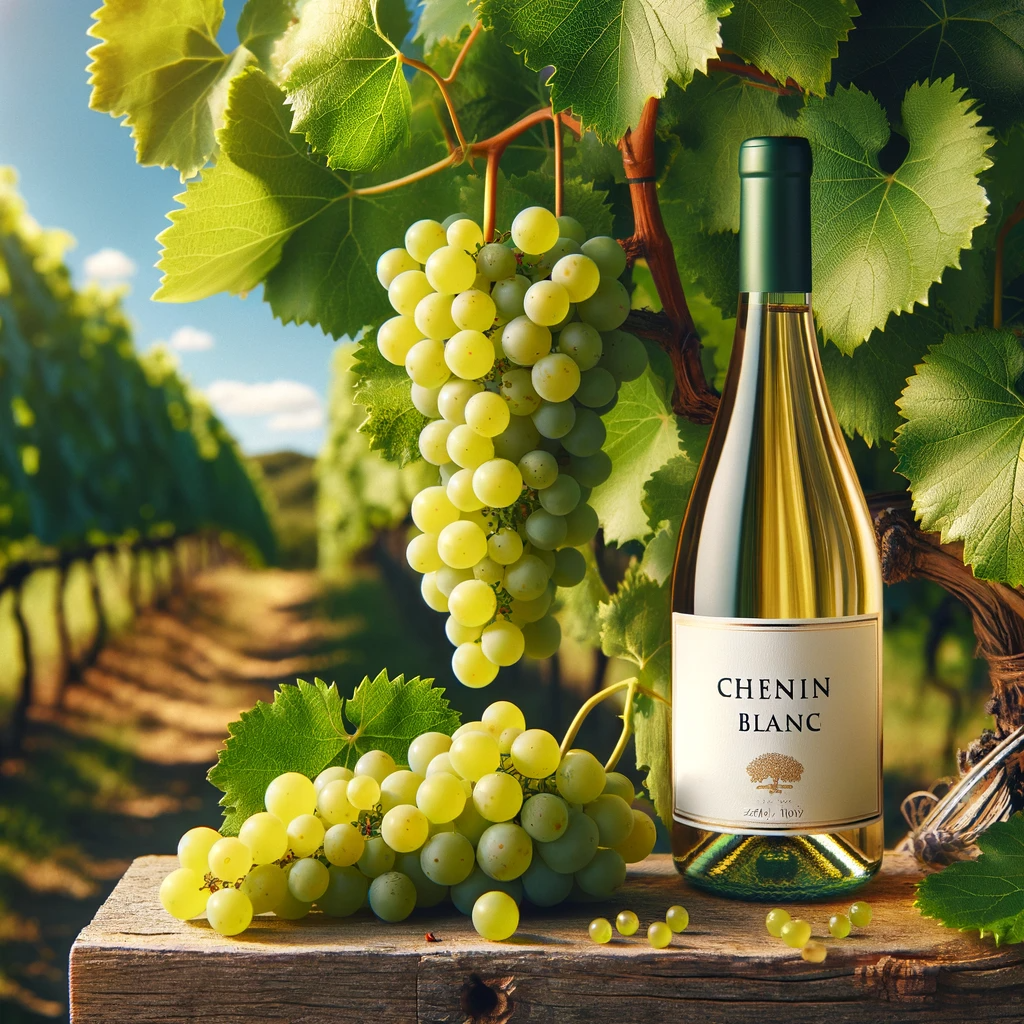Wine has been a part of human civilization for thousands of years, with its roots dating back to ancient times. Among the numerous grape varieties used to create this exquisite beverage, Chenin Blanc stands out as one of the most versatile and enduring. With a rich history, a global presence, and a growing importance in Texas wine production, Chenin Blanc has earned its place as a beloved wine varietal.
The History of Chenin Blanc
The origins of Chenin Blanc are shrouded in mystery, with some speculating that it originated in the Anjou region of France while others believe it has roots in the Loire Valley. Regardless of its exact origins, Chenin Blanc has been cultivated in France for over a thousand years. It earned its name “Chenin” from the French word for “pine,” likely due to the grape’s tendency to grow in a conical shape.
Chenin Blanc quickly spread beyond French borders. In the 17th century, Dutch settlers brought the grape to South Africa, where it became known as “Steen.” South Africa’s climate and soil proved to be exceptionally well-suited for Chenin Blanc, and it flourished, eventually becoming the country’s most widely planted grape variety.
Chenin Blanc Worldwide
Today, Chenin Blanc is planted in various wine regions around the world, each contributing its unique character to the wine produced. Here are some notable examples:
1. France:
- Loire Valley: Chenin Blanc’s heartland is still in the Loire Valley, where it thrives in various appellations such as Vouvray, Saumur, and Savennières. These wines range from dry to sweet, with Vouvray producing some of the most famous examples of Chenin Blanc wines. Vouvray Chenin Blancs often display crisp acidity, a bouquet of floral and fruity notes, and the ability to age gracefully for many years.
2. South Africa:
- Stellenbosch and Swartland: South African Chenin Blanc, locally known as Steen, has experienced a renaissance in recent years. Producers in regions like Stellenbosch and Swartland are making exceptional wines, often showcasing a balance between vibrant acidity and tropical fruit flavors.
3. United States:
- California: Chenin Blanc was once widely planted in California but has since declined in popularity. However, some producers still make high-quality Chenin Blanc wines in the state, particularly in the Clarksburg region.
- Texas: Texas has emerged as a promising region for Chenin Blanc production in recent years, thanks to its diverse terroir and innovative winemakers.
Chenin Blanc in Texas Wine
Texas has gained recognition as a growing wine region in the United States, and Chenin Blanc has played a significant role in this development. The state’s diverse terroir, which includes the High Plains, Hill Country, and the Texas Panhandle, provides a range of microclimates suitable for cultivating various grape varieties, including Chenin Blanc.
1. High Plains:
- The High Plains AVA (American Viticultural Area), located in the Texas Panhandle, is known for its high elevation and wide temperature fluctuations, which create ideal conditions for growing Chenin Blanc. The region’s well-drained soils and ample sunlight contribute to the grape’s optimal ripening.
2. Texas Hill Country:
- The Texas Hill Country, with its unique mix of granite and limestone soils, is another promising area for Chenin Blanc production. The region’s warm days and cool nights result in wines with vibrant acidity and a rich flavor profile.
3. Texas Wineries:
- A growing number of Texas wineries are recognizing the potential of Chenin Blanc and are experimenting with different winemaking techniques to showcase the grape’s versatility. Some producers craft Chenin Blanc in both dry and off-dry styles, appealing to a wide range of wine enthusiasts.
Chenin Blanc Styles in Texas:
- Dry Chenin Blanc: Many Texas wineries are producing dry Chenin Blanc wines that exhibit bright acidity, citrus notes, and a crisp finish. These wines are excellent for pairing with a variety of dishes, making them a popular choice for Texas wine enthusiasts.
- Off-Dry and Sweet Chenin Blanc: Some wineries in Texas also produce off-dry and sweet Chenin Blanc wines, which can range from slightly sweet to dessert-style wines. These styles showcase the grape’s ability to produce wines with complex flavors and varying levels of residual sugar.
Some Texas Wineries’ Chenin Blanc
A few wineries in Texas produce very nice Chenin Blanc wines that won’t disappoint. To get you started on a few, try McPherson Cellars’ Dry Chenin Blanc or Fall Creek Vineyards Chenin Blanc. And yet another nice Chenin Blanc journey would lead you to Messina Hof where you will find the Lepard Vineyard Chenin Blanc.
Chenin Blanc vs. Other Wines
Chenin Blanc stands out among the many grape varieties used in winemaking due to its unique characteristics. Here, we’ll compare Chenin Blanc to some other popular white wine varieties:
1. Chenin Blanc vs. Chardonnay:
- Chenin Blanc tends to have higher acidity compared to Chardonnay, resulting in a crisper and more refreshing wine.
- Chardonnay is often aged in oak barrels, imparting a noticeable oak influence, while Chenin Blanc is typically aged in stainless steel or neutral oak, preserving its fresh fruit flavors.
- Chenin Blanc’s flavor profile often includes notes of green apple, pear, and citrus, while Chardonnay can exhibit a wider range of flavors, from tropical fruits to buttery and toasty notes.
2. Chenin Blanc vs. Sauvignon Blanc:
- Chenin Blanc generally has a more rounded mouthfeel compared to the zesty and herbaceous character of Sauvignon Blanc.
- Sauvignon Blanc tends to showcase grassy, herbal, and green fruit aromas, while Chenin Blanc leans toward floral and stone fruit aromatics.
- Both varietals are known for their high acidity, making them refreshing choices, but Chenin Blanc often has a slightly softer acidity compared to Sauvignon Blanc’s sharpness.
3. Chenin Blanc vs. Riesling:
- Chenin Blanc and Riesling share similarities in their high acidity and versatility, but they have distinct flavor profiles.
- Riesling is known for its pronounced floral and fruity aromatics, often accompanied by petrol or mineral notes, while Chenin Blanc offers a broader spectrum of flavors, including both citrus and stone fruit.
- Riesling wines can range from bone-dry to lusciously sweet, while Chenin Blanc has a similar range but typically falls in the off-dry to dry category.
Conclusion
Chenin Blanc, with its long and storied history, has proven to be a grape variety of remarkable adaptability and diversity. Its ability to produce wines in various styles, from dry and crisp to sweet and luscious, has earned it a place on tables and in cellars around the world. In Texas, Chenin Blanc is making its mark, adding to the state’s reputation as an emerging wine region in the United States.
As Texas wineries continue to experiment with Chenin Blanc and showcase its potential, wine enthusiasts can look forward to discovering an ever-evolving range of expressions of this versatile grape. Whether you prefer a bone-dry, crisp Chenin Blanc or a lusciously sweet one, this timeless varietal has something to offer every palate, making it a truly remarkable and enduring wine choice. So, the next time you explore a wine list
About the Author

A native of Texas, Ken “Texan” Pierce is a renowned alcohol aficionado with over 15 years of experience in the Texas wine, whiskey, and beer industry. With a vast number of alcohol production resources right in his back yard in the Texas Hill Country, Ken has made it his mission to promote and advance the Texas winemaking, distilling, and brewing industry across the country. His uncanny ability to identify tasting notes and pairings makes him a respected authority within alcohol enthusiast circles. When he’s not reviewing the latest craft spirits, you can find Ken playing his guitar, trying to sing, and sipping on a Texas libation.

